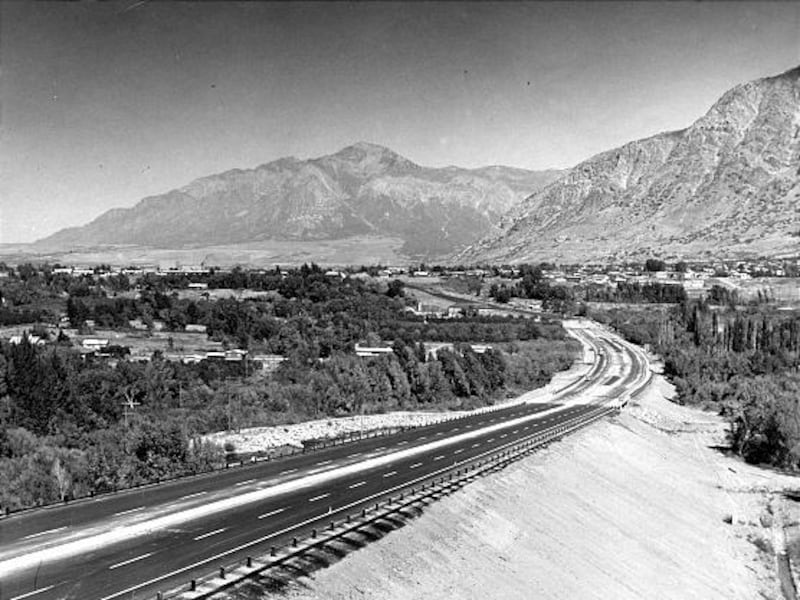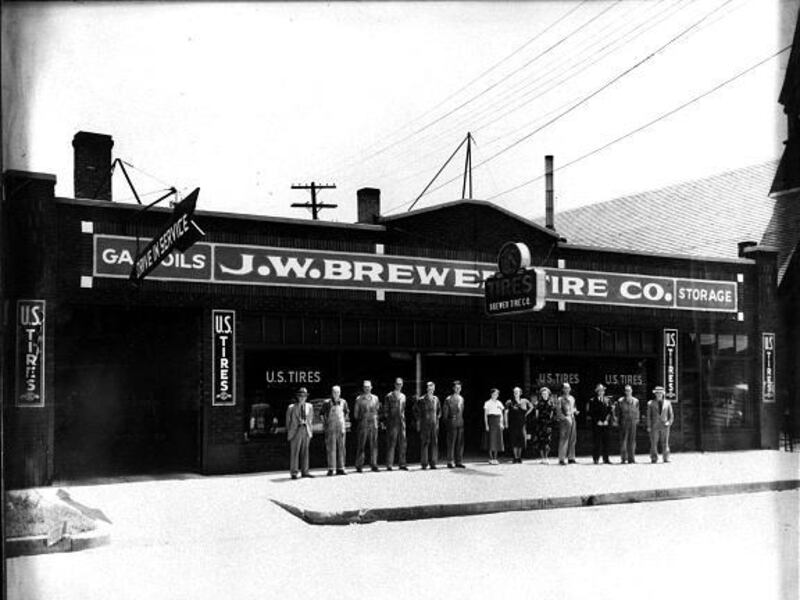OGDEN — The city of Ogden ranks only seventh largest for population in Utah today, but for many decades this "Junction City" was No. 2 and thus has a fascinating history rivaled only by Salt Lake City.
Consider the following historical items, all found in Deseret News reports over the years:
Ogden was the major railroad hub — especially for east-west travel in Utah for many years. Until the 1960s, its Union Station was the busiest thing in town. Ogden boasted the West's largest rail switching terminal for many years, and the railroad was Ogden's No. 1 industry in the 1940s.
"Sixty-two different trains — both passenger and freight — stop in the Ogden yards every single day," the Deseret News reported on May 8, 1949, in the days of Ogden's "Cowboy" Mayor Harman W. Peery.
The city featured the territory of Utah's first white settlement — Mountain man Miles Goodyear and his family built a fort (today's Fort Buenaventura) and cabins in what is present-day West Ogden in 1845-46, before the Mormon pioneers arrived.
The Ogden area could have been the "This is the place" place under different circumstances. In July of 1847 Goodyear visited with the first Mormon company traveling west from Fort Bridger, Wyo. He tried to persuade them to settle on the Weber River but failed. Soon after, Mormon pioneer scouts traveled west past today's Morgan Valley into Weber Canyon to check the travel conditions. However, Devil's Gate, a rugged, rocky obstacle, blocked the canyon, and the pioneers decided to traverse Emigration Canyon instead.
(Later, the Mormons used gold, about $1,950 worth, earned from service in the Mormon Battalion, to purchase the area from Goodyear. It first became "Brownsville" and soon after Ogden.)
Some major streets in Ogden have a presidential flair. Seventeen of Ogden's main north-south streets are named after U.S. presidents. Knowing them — and their order — can help you find your way around town. We're talking Washington Boulevard as the city's center thoroughfare. Going east, the full-block streets advance in order, up to the 15th president, James Buchanan. Drop back to west of Washington Boulevard and there are two more presidential streets, Lincoln and Grant.
Originally, some of Ogden's north and south streets were named after prominent leaders of The Church of Jesus Christ of Latter-day Saints. For example, Washington Boulevard was originally Main Street. Lincoln was Franklin Street, for Franklin D. Richards; Grant Avenue was Young Street, for Brigham Young. Also, Jefferson Avenue used to be Smith Street, for Joseph Smith, the founder of the LDS Church. (The only north-south street name left intact by Mayor Fred J. Kiesel was Wall Avenue.)
Why did the name changes happen?
It was an attempt to "Americanize" Ogden, according to "A History of Weber County," by Richard C. Roberts and Richard W. Sadler. The first non-Mormon mayor, Kiesel (1889-91) convinced the City Council to rename Ogden's streets at an April 5, 1889, meeting.
The focal point was likely the rivalry between the Mormons and non-Mormons in Ogden at the time. Ogden had a bigger power struggle going on then than Salt Lake City did, because of its status as a railroad hub that attracted many more non-Mormons to the area.
Although Ogden has preserved some of its oldest buildings, like the Miles Goodyear cabin, it has lost some historical gems over time. The Broom Hotel, an imposing structure on the northwest corner of 25th and Washington, was demolished in 1958 to make way for Commercial Security Bank.
Ogden also lost some of its oldest buildings on 25th Street in 1961, between Grant and Kiesel avenues, to accommodate a new federal building. The "Two-Bit Street" (25th) was formerly known throughout the region for its saloons, fancy hotels and casinos.
The old Ogden LDS Tabernacle, constructed in 1855-56, also was torn down in August of 1971, to make way for the Ogden LDS Temple grounds.
e-mail: lynn@desnews.com














